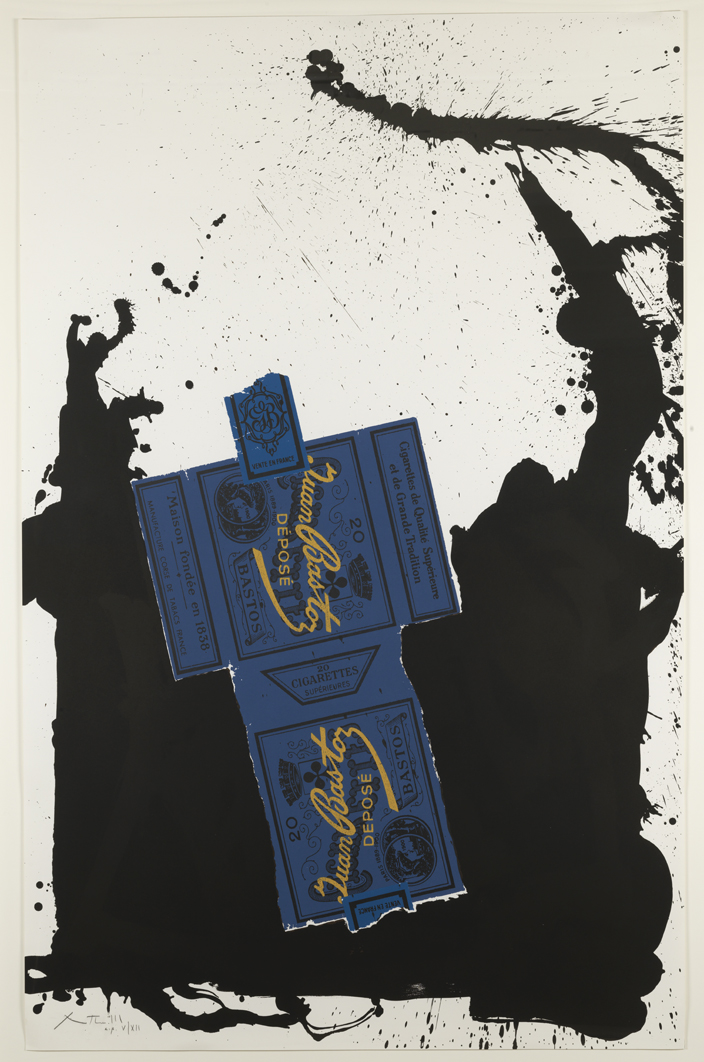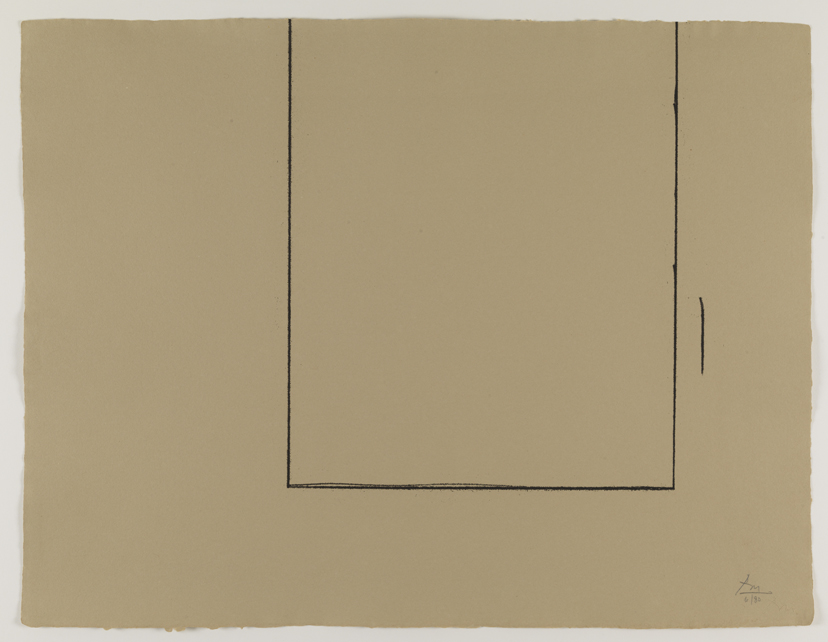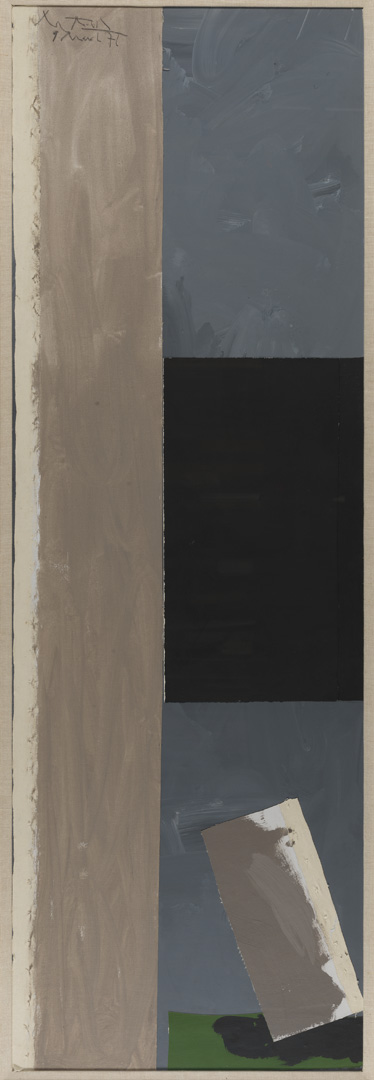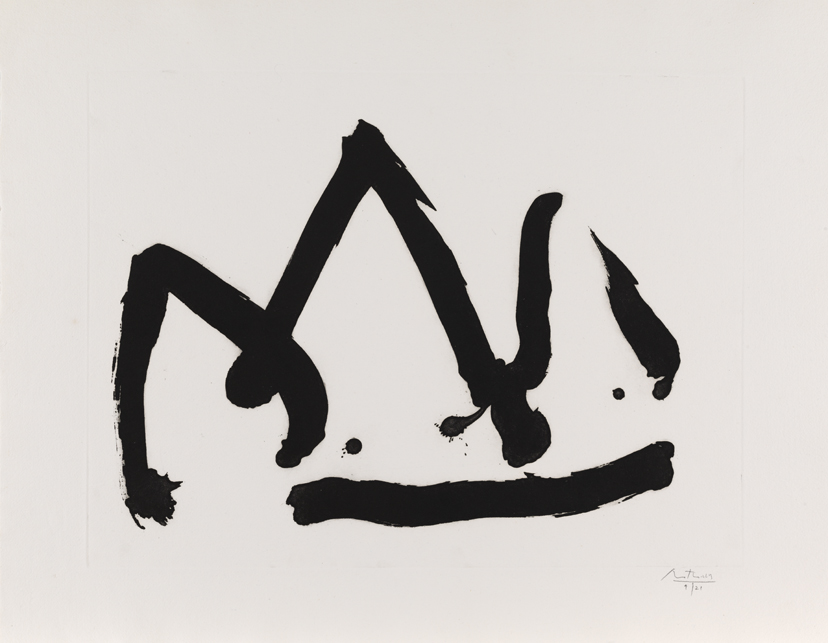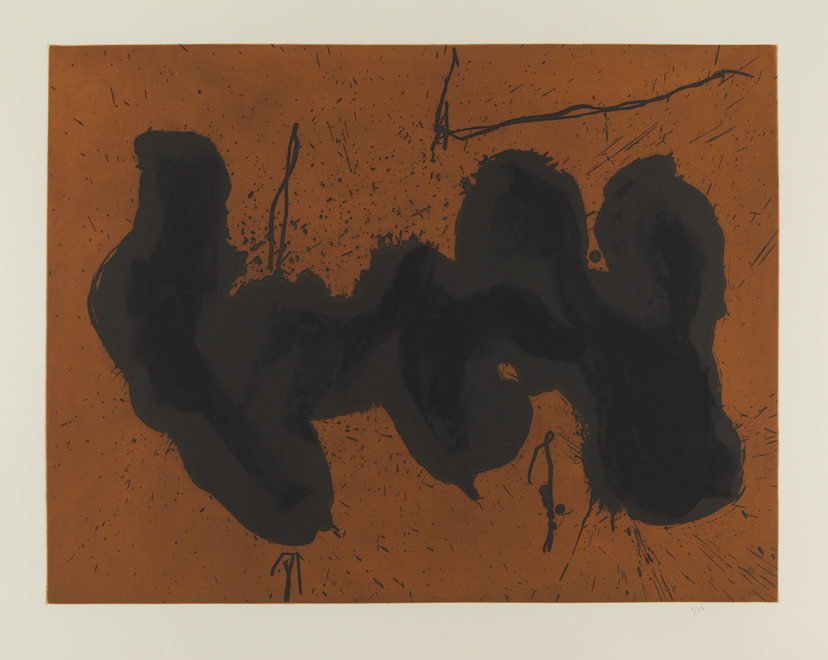
Barcelona Elegy for the Spanish Republic
Robert Motherwell
The most intellectual and articulate of the Abstract Expressionists, Motherwell laid out the existentialist underpinnings of their artistic project, writing essays for the "Partisan Review" and collaborating on the journal " Possibilities" with the critic Harold Rosenberg. Motherwell pursued a doctorate in philosophy at Harvard University but abandoned his studies in 1940. He began to take classes at Columbia University with the art historian Meyer Shapiro, who suggested that Motherwell take up painting. Through Shapiro, he was introduced to the Surrealist artist Kurt Seligmann, and soon Motherwell befriended Max Ernst, Marcel Duchamp, André Breton, and other members of the international avant-garde. In 1941, he moved to Greenwich Village and soon met William Bazoites, Jackson Pollock and Lee Krasner, the future core of the Abstract Expressionists.
"Barcelona Elegy for the Spanish Republic" is from Motherwell's definitive series of works memorializing the Spanish Civil War of the 1930s. For more than forty years, Motherwell used the imagery of large black ovals and bars to commemorate the Spanish poet Garciá Lorca, executed by Fascists during the war. Inspired by Lorca's poem "Lament for Ignacio Sánchez Mejías," describing the death of a bullfighter, Motherwell utilized white to symbolize the radiance of life and black to signify death, touching on universal issues of mourning and remembrance.
Artist
Date of Birth
(1915-1991)
Date
1991
Medium
Etching and aquatint
Dimensions
27 1/2 x 21 1/8 in. (69.85 x 53.6575 cm.)
Accession #
1994.6.36
Credit Line
Gift of the Dedalus Foundation and the John Lambert Fund
Copyright
Art © Dedalus Foundation, Inc. / Licensed by VAGA, New York, NY
Category
Subject
We're so excited you're planning to visit PAFA!
Make time for art — visit us Thursday to Sunday.
Before reserving your tickets, please review helpful information about museum hours, accessibility, building access, and special admission programs.
If you have any questions, feel free to reach out to us at visitorservices@pafa.org — we’d love to help!
